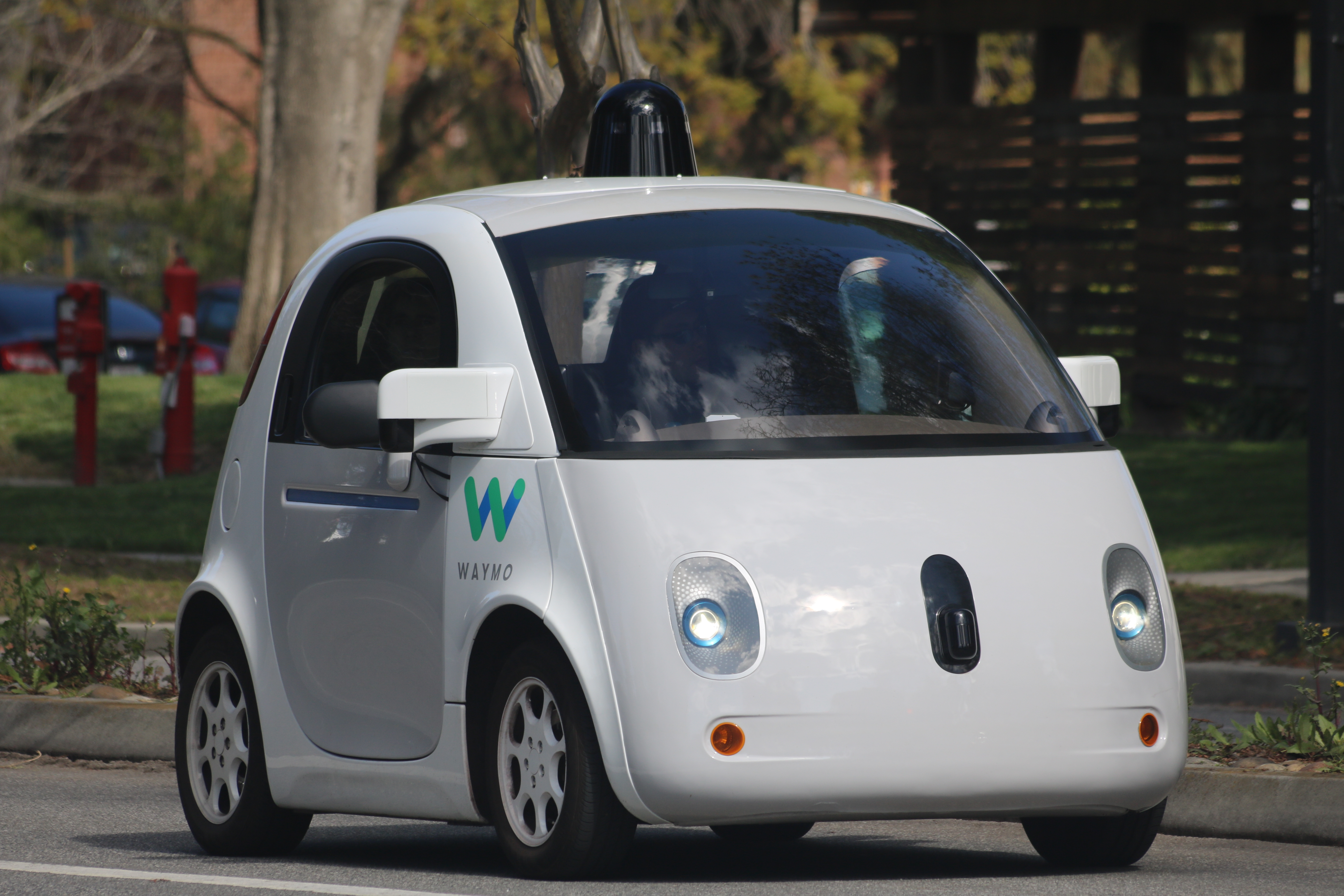by JAKE SMITH
While we won’t be having any flying cars soon, autonomous cars are no longer a topic for the future. With big names working relentlessly at developing a working design, we hope to see the first self-driving cars on the road (and not in testing), in two or three years.
But where exactly are we on the road to reforming the current driving experience? Let’s have a look at the state of autonomous cars now vs. what we hope to achieve in the near future.
Companies Testing Self-Driving Vehicles
The names involved in creating this fantastic product are impressive. Starting with well-known automakers (such as BMW, Volkswagen, Tesla), and moving on to transportation companies (Uber or Lyft), tech companies (Apple or Google), and even hardware component companies (Nvidia, IBM, or Intel).

Everyone has an interest in developing these vehicles so there’s no wonder all sorts of companies work on them. But who actually managed to advance to the testing phase? For now, we know about Uber, Google (with the Waymo car), Tesla with their autopilot system, and General Motors or Apple (they still didn’t offer a full disclosure of their progress). Each of these companies is currently testing in the US or Europe. They achieved impressive results that support the theory of driverless cars by the year 2020.
While they may not yet have a working vehicle, companies like BMW, Volvo, and/or Ford are also participating in the race for a new driving concept.
Obstacles to Overcome
The main obstacle standing right now is represented by the safety of others (especially pedestrians). While autonomous cars implement advanced sensors and software, we still have to deal with the reality of accidents.

Both Tesla and Uber have to support the consequences of their self-driving cars crashing and even causing fatalities, and Google is dealing with a similar situation but without victims. There are still plenty of things to work out in this department, and the chain of responsibility is one of them.
There is also the safety of other cars driven by human drivers and the problem of reading faulty signs that can be easily interpreted by humans but not by automated systems. These problems may be solved by using advanced AI designs, but for now they are still a major obstacle.
Besides these aspects, developers also have to consider road infrastructure, charging stations (in the eventuality when we’ll all drive electric cars), the car ownership system, and more. For now, most carmakers work on creating fleets of cars that can be summoned by anyone in need of a ride, using a phone app.
How Much Will it Cost?
Specialists predict that the first self-driving vehicles will be exorbitant and completely out of reach for most people. This is understandable if you consider the amount of technology and expensive hardware involved.

For instance, the LIDAR system alone costs around $75,000 per car, so you can see why we can expect the cost of one self-driving car to be somewhere around $90,000 and $150,000. However, the automakers and leaders of the industry have hope that the overall cost per car would drop by the year 2025 with about 95%. While this prediction may be a bit too optimistic, we have to consider the speed of technological advancement that brought us to the first self-driving cars.
However, if everything works as expected, individual users may not have to think about the total cost of the car, since ownership may not be a thing in the future.
How will the Future Look Like?
Overall, autonomous cars aren’t that far away, but how are we going to function in the future? How will the traffic system work and where would we, the humans stand?

Here are a few things to consider when you think about the future with autonomous cars in it:
Lower levels of air and noise pollution
It is hoped that the vehicle of the future is electric and that we’ll use solar energy to power it. In this case, the levels of air pollution around highly used traffic routes will drop significantly. Also, electric cars are more silent and require less maintenance.
Less time spent in traffic (no jams)
In a world where all cars are automated and communicate with each other effectively, we don’t need to drive slowly. Each car’s AI will know about crowded areas. It will calculate the optimum route to get to the destination in the shortest time possible. Also, since each car will know what to do, there will be no traffic jams.
The design of the car will be different

Right now, the vehicle is shaped to accommodate the needs of a human driver, but this will most likely change in the future. We’ll only be passengers, so the interior will be adapted to provide the maximum of comfort, while the exterior will be adapted for maximum speed and safety.
No ownership
It seems that, in a future where cars can run errands by themselves, we won’t need to own them anymore. Instead, the vehicles will belong to the producing company (or the one owning the fleet), and we’ll use them whenever we need them.
This means less money invested in maintenance and ownership, no need to worry about insurance or your vehicle being stolen. Overall, the current worries connected to your car will simply go away.
No accidents with fatalities
Right now, the number of people who die or are immobilized by a traffic accident is extremely high. Even more, in most accidents, human error is the main culprit. This is why, when the human factor will be removed from the decision-making process, specialists hope at a dramatic drop in the number of accidents.
More space for pedestrians
The aspect of the cities will be changed because we won’t need that many parking spaces anymore. This means more space for pedestrians and people enjoying a bike ride. We also hope we’ll get more green spaces and bigger playgrounds, but most importantly, cars will no longer sit on the side of the road, taking up space we can use for anything else.
How to get Low-Cost Self-Driving Features Now
Cars that have level 2 or 3 of autonomy are already here. You can see these amazing features in the latest Tesla, BMW, or Mercedes models. Starting with auto-braking when the sensors sense a possible collision, lane switching protection, and moving to full-on driving with the driver’s assistance, these are the features that make driving a little less difficult.

As you can imagine, most of these features are implemented in the most expensive models. Still, if you do a bit of research, you’ll find some of the basic ones in cheaper models as well. For instance:
- 2018 Ford Fusion Energi and Hybrid models have stop-and-go adaptive cruise control;
- 2018 Ford F-150 and Expedition have the same feature;
- Most 2018 GM brands have adaptive cruise control;
- Honda equipped its 2018 models with lane-centering steering at higher speeds and stop-and-go adaptive cruise control (both features are not available in all models);
- Some of the 2018 Hyundai and Kia models also have the stop-and-go cruise control and lane-centering steering;
- Nissan also offers several models with adaptive cruise control, lane-centering steering at high speeds, and lane-centering steering all the way to a stop;
Subaru, Toyota, Volkswagen, and Volvo also provide the features mentioned above on some of their 2018 models.
 As you can see, most automakers are focused on introducing new features into the newest models, and this is fantastic. However, new technology takes a while to get affordable, so why are these models more affordable?
As you can see, most automakers are focused on introducing new features into the newest models, and this is fantastic. However, new technology takes a while to get affordable, so why are these models more affordable?
Well, the technology we’re talking about is marketed as safety improvements. Due to new regulations, producers have to include it in their packages. This is why the prices are lower and more buyers can afford it.
For instance, the 2017 Toyota Corolla comes with adaptive cruise control, lane departure alert with steering assist, and forward auto-braking when it detects a pedestrian. The price of such a well-equipped vehicle starts at about $20,000!
You can find the same features in the Toyota Prius Prime, with a price of about $28,000. At about the same price, we have the Honda CR-V. It has the same features, plus forward collision warning, lane departure warning, and more.
Other models to consider in the same price category are: Hyundai Elantra, Mazda CX-5 and CX-3, Subaru Impreza and Legacy, Toyota Rav4, Honda Accord, Honda Civic, or Kia Forte.
In Conclusion
We can’t wait to see where the future will take us, but we know for sure it will be great! After all, the car industry needs a breath of fresh air to boost the technology to the next step! We’ve been lingering for too long in the same place and automakers need to kick it up a notch.
Of course, we know it will take a while to get to the future that specialists predicted. We will be more than happy to see the first level 3 autonomous cars on the streets. It’s a step in the direction of environmental care and safer roads.
Discuss This Post


 Google confirms some Gmail add-ons break its email-scanning rules
Google confirms some Gmail add-ons break its email-scanning rules Huawei Mate 20 Pro Underwater Camera Mode, Google Pixel 3 Leaked Again | Pocketnow Daily
Huawei Mate 20 Pro Underwater Camera Mode, Google Pixel 3 Leaked Again | Pocketnow Daily Google Home Hub revealed, FCC may have looked over it
Google Home Hub revealed, FCC may have looked over it

